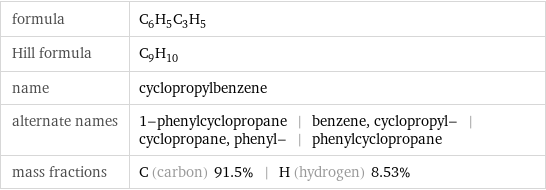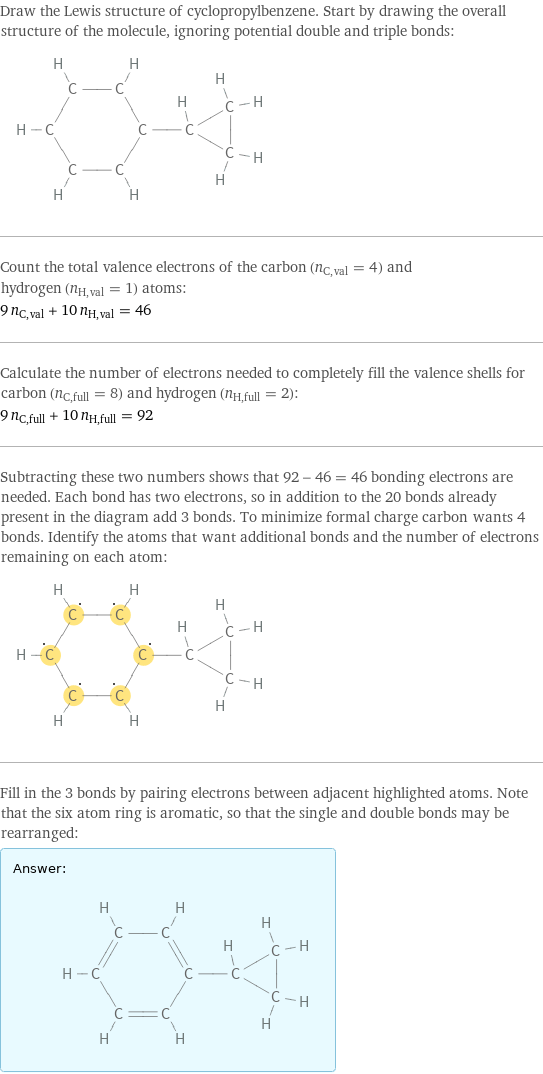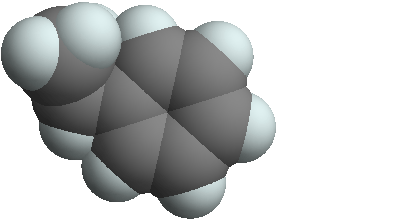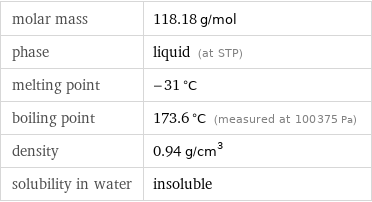Input interpretation

cyclopropylbenzene
Chemical names and formulas

formula | C_6H_5C_3H_5 Hill formula | C_9H_10 name | cyclopropylbenzene alternate names | 1-phenylcyclopropane | benzene, cyclopropyl- | cyclopropane, phenyl- | phenylcyclopropane mass fractions | C (carbon) 91.5% | H (hydrogen) 8.53%
Lewis structure

Draw the Lewis structure of cyclopropylbenzene. Start by drawing the overall structure of the molecule, ignoring potential double and triple bonds: Count the total valence electrons of the carbon (n_C, val = 4) and hydrogen (n_H, val = 1) atoms: 9 n_C, val + 10 n_H, val = 46 Calculate the number of electrons needed to completely fill the valence shells for carbon (n_C, full = 8) and hydrogen (n_H, full = 2): 9 n_C, full + 10 n_H, full = 92 Subtracting these two numbers shows that 92 - 46 = 46 bonding electrons are needed. Each bond has two electrons, so in addition to the 20 bonds already present in the diagram add 3 bonds. To minimize formal charge carbon wants 4 bonds. Identify the atoms that want additional bonds and the number of electrons remaining on each atom: Fill in the 3 bonds by pairing electrons between adjacent highlighted atoms. Note that the six atom ring is aromatic, so that the single and double bonds may be rearranged: Answer: | |
3D structure

3D structure
Basic properties

molar mass | 118.18 g/mol phase | liquid (at STP) melting point | -31 °C boiling point | 173.6 °C (measured at 100375 Pa) density | 0.94 g/cm^3 solubility in water | insoluble
Units

Liquid properties (at STP)

density | 0.94 g/cm^3 refractive index | 1.533
Units

Chemical identifiers

CAS number | 873-49-4 PubChem CID number | 70112 PubChem SID number | 24849715 SMILES identifier | C1CC1C2=CC=CC=C2 InChI identifier | InChI=1/C9H10/c1-2-4-8(5-3-1)9-6-7-9/h1-5, 9H, 6-7H2 MDL number | MFCD00001275
Safety properties

flash point | 43.89 °C

DOT hazard class | 3 DOT numbers | 3295